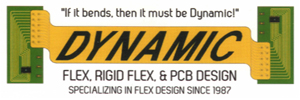PCB flex circuit boards is not just a structure designed to keep electronic components fixed and anchored. Its functionalities are deeper and embrace several criteria.
A journey to discover flex boards in the USA
PCB flex circuit design guide:
The designers 40 years ago were real heroes. They did not have computers or software for designing and flex circuit manufacturing. However, they made high-quality PCB flex circuit prototype and very intricate designs flex boards in the USA. Obviously, at that time, the circuit and high frequency needs of our days did not exist.
The products produced, both single-sided PCBs and double-sided PCBs, were able to satisfy most of the needs of customers, even the most sophisticated.
Types of PCB or printed circuit
There are different types of PCBs, depending on the applications required. Among the most widespread and important are those with a single layer, double layer, multilayer, flexible, aluminum support, etc.
Single-sided PCB:
Today the speech is entirely different. The high quality and performance of the electronic devices, the high frequency, the miniaturization, and the very high number of components mean that the result must be extremely sophisticated.
The flex circuit manufacturing, design, and the creation of new flex circuit boards imply a professional flex circuit manufacturing process in the factory. Thanks to the use of specialized machinery. It is unthinkable to manually create complex printed circuits consisting of four, six, or eight layers. Consider, for example, the high technology contained in the latest models of computer motherboards. The simplest and cheapest type is single-layer one.
Double-sided PCB:
The double-layer (or double-sided) PCB flex circuit board is already considerably more complex and can solve many problems. It is composed of two thin layers of conductor around an insulating material. The pads (linked together) must correctly match the two levels.
The multilayer PCB consists of at least three layers of conductive material. This type allows very complex realizations, allowing extremely compact assemblies. Flex circuit boards use a pliable plastic material and can contain multiple layers. These boars have many different applications.
Types of PCB flex circuit boards for different purposes and applications
Flex circuit boards are very different. They differ from each other in terms of operating frequencies, operating speeds, current powers, for use in the automotive or domestic sector, medical applications, and more. This first distinction is already sufficient to understand the need for a different implementation approach.
Depending on the device’s final use, analysts will have to evaluate the design criteria of a PCB differently. Circuits typically demand different practical and technical scenarios. Today the production as well as flex circuit manufacturing process is extremely complex.
Due to the size of the various elements (for example, traces and holes), the working systems, along with the flex circuit material, are supported by equally sophisticated instrumentation (microscopes, X-rays, HR scanners for checking Gerber files, metallographic processes, lasers, etc.). Computers and programmed machinery follow all design phases.
The final quality depends on its use. Keeping rough use in mind, PCBs go through stringent compliance checks and certifications.
Analysis
The different nature of the devices also dictates the requirements for choosing the flex circuit material. Depending on the application, the different types of substrate can affect the results differently.
It is impossible to create an ideal or perfect flex circuit board because each electronic board performs a unique variety of work, according to the electrical needs and the required performance. Today, insulating materials are common for the dielectric with different characteristics.
Especially for high frequencies, it is crucial to follow specific criteria, since parasitic capacitances and distributed impedances play a decisive role in the final performance. We try to find flex circuit materials in which the dielectric factor remains constant over a wide range of frequencies.
Today machines and robots make flex boards in the USA!
On the contrary, it is preferred to divide the work on different equipment, to obtain the best possible results. Some realizations become visible when seen under the microscope.
For example, some machines directly generate the image of the traces on the photosensitive boards, without the need to use masks, starting from raster or vector images. Others make blind or through holes with small precision. Despite the technologies, there are problems that companies try to solve. One of these is the misalignment of the layers in multi-level PCBs.

